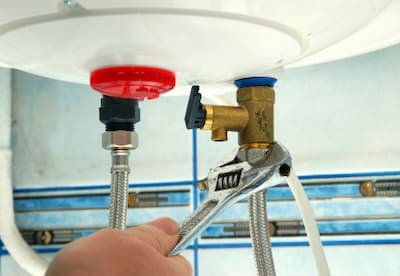Easy Steps to Caring for Your Home's Hot Water SystemImportant Advice on Maintaining Your Home's Hot Water System
Easy Steps to Caring for Your Home's Hot Water SystemImportant Advice on Maintaining Your Home's Hot Water System
Blog Article
How do you feel about How to Maintain Your Water Heater & Prolong its Life?

Warm water is essential for everyday convenience, whether it's for a rejuvenating shower or cleaning meals. To guarantee your warm water system runs effectively and lasts longer, routine upkeep is essential. This write-up provides functional tips and understandings on how to maintain your home's warm water system to avoid disturbances and costly repairs.
Introduction
Keeping your home's hot water system may seem complicated, but with a couple of simple steps, you can guarantee it operates smoothly for several years to come. This overview covers everything from recognizing your hot water system to DIY upkeep tips and understanding when to call in expert aid.
Importance of Preserving Your Warm Water System
Regular maintenance not just expands the life expectancy of your warm water system yet additionally ensures it operates successfully. Ignoring upkeep can lead to reduced effectiveness, greater energy bills, and also early failure of the system.
Indications Your Warm Water System Demands Maintenance
Understanding when your hot water system needs interest can protect against major concerns. Look out for signs such as inconsistent water temperature level, odd sounds from the heater, or corroded water.
Understanding Your Hot Water System
Before diving right into upkeep jobs, it's helpful to recognize the basic parts of your warm water system. Typically, this includes the water heater itself, pipes, anode rods, and temperature controls.
Regular Monthly Upkeep Tasks
Normal month-to-month checks can aid catch minor problems before they escalate.
Purging the Hot Water Heater
Purging your hot water heater removes sediment buildup, improving efficiency and prolonging its life.
Checking and Replacing Anode Rods
Anode rods avoid rust inside the storage tank. Inspecting and changing them when broken is essential.
Examining and Changing Temperature Level Setups
Changing the temperature setups makes sure ideal efficiency and security.
DIY Tips for Maintenance
You can carry out several maintenance tasks on your own to maintain your warm water system in leading problem.
Checking for Leakages
Regularly inspect pipelines and links for leakages, as these can result in water damage and higher costs.
Examining Stress Alleviation Valves
Evaluating the pressure relief valve guarantees it works correctly and protects against excessive pressure build-up.
Shielding Pipes
Insulating hot water pipes lowers warmth loss and can save energy.
When to Call a Professional
While do it yourself upkeep is useful, some issues require specialist proficiency.
Complex Issues Requiring Specialist Assistance
Examples include significant leakages, electrical problems, or if your hot water heater is regularly underperforming.
Routine Specialist Maintenance Benefits
Specialist maintenance can include extensive inspections, tune-ups, and guaranteeing conformity with security standards.
Verdict
Regular upkeep of your home's hot water system is crucial for effectiveness, longevity, and price savings. By adhering to these suggestions and recognizing when to seek specialist assistance, you can guarantee a reliable supply of hot water without unanticipated disruptions.
How to Maintain an Instant Hot Water Heater
Before tinkering with your hot water heater, make sure that it’s not powered on. You also have to turn off the main circuit breaker and shut off the main gas line to prevent accidents. Also turn off the water valves connected to your unit to prevent water from flowing into and out of the appliance. 2. When you’re done, you have to detach the purge valves’ caps. These look like the letter “T” and are situated on either side of the water valves. Doing so will release any pressure that has accumulated inside the valves while at the same time avoid hot water from shooting out and burning your skin. 3. When the purge valves’ caps are removed, you have to connect your hosing lines to the valves. Your unit should have come with three hoses but if it didn’t, you can purchase these things from any hardware or home repair shops. You can also get them from retail stores that sell water heating systems. Read the user’s manual and follow it to complete this task properly. When the hosing lines are connected, open the purge port’s valves. 4. You should never use harsh chemical cleaners or solutions when cleaning your unit. Make use of white vinegar instead. It should be undiluted and you’ll probably use about 2 gallons. 5. Now flush your water heater. This task should probably take about 40 minutes. We can’t give you specific directions for this because the procedure is carried out depending on the type, model and brand of your heater. With that being said, refer to the user’s manual. 6. When you’re done draining the unit, you have to turn off the purge port valves again. Remove the hosing lines that you earlier installed on each of the water valves. Put the valve caps (purge port) back in their respective places and be very careful so as not to damage the rubber discs that are found inside these caps. 7. Now that everything’s back in place, check your user’s manual again to find out how to reactivate your water heating system. 8. Once it is working, turn one of your hot water faucets on just to let air pass through the heater’s water supply pipes. Leave the tap on until water flows smoothly out of it. https://www.orrplumbing.com/blog/2014/september/how-to-maintain-an-instant-hot-water-heater/

I am very involved in How to Maintain a Hot Water Heater in a Few Simple Steps and I really hope you enjoyed reading the entire piece. Sharing is nice. You just don't know, you might be helping someone out. We treasure your readership.
Schedule Free Estimate Report this page